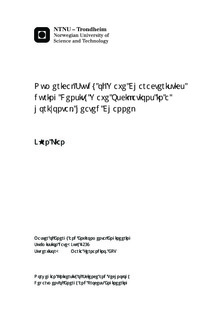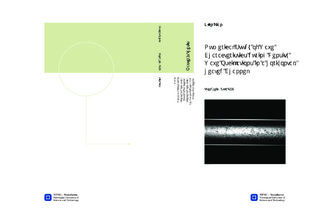| dc.description.abstract | Boiling flow in steam generators, water cooled reactors and other multiphase processes can be subject to instabilities. One of the main types of instabilities is DWO, a low amplitude and high frequency phenomenon. DWO can lead to system control problems, affect heat transfer characteristics and induce mechanical vibration of components. The need to predict the occurrence of such instabilities and know how affecting system parameters may be adjusted to control the oscillation is of high importance. In this report DWO is investigated by adding heat to a single horizontal channel. The changes in amplitude and period caused by heat-, pressure-, inlet subcooling and mass flux variations are studied numerically and compared with experimental results. The wave characteristics are also studied through a literature study. The literature review reveals that most studies for DWO are performed for vertical channels, even though horizontal channels are encountered more often in industrial applications. A hypothesis for changes in amplitude and period based on former studies mainly executed in horizontal channels is made, even though some contradicting results are found in literature regarding wave characteristics.
A method of extracting the amplitude and period of the oscillations for both the numerically modeled results and the recreated experimental results are proposed, and a method to reduce the amount of simulations needed to find the marginally stable operating conditions by using the model is established. Stability maps based on dimensionless parameters that relate the inlet subcooling and applied heat to the unstable and stable operating conditions are found in literature. The model shows converging behavior of the oscillations when operating in the stable area and diverging behavior when operating in the unstable area. Compared to experimental results from literature, the numerically obtained stability boundary is predicted to be to the left of experimentally obtained stability boundary, making the modeled diverging DWOs to appear at lower equilibrium phase change numbers. The experimental results show marginally stable oscillations when operating in the unstable area.
The effect of increasing applied heat is found to increase the amplitude and reduce the period of the oscillations by both the numerical and the experimental results. The modeled results predict the increased inlet subcooling to increase the amplitude and the period. However, the experimental results displays a small decrease in amplitude for increased inlet subcooling for the set operating conditions, while the period shows the same effect as the modeled results. The increased pressure is by the model shown to decrease the amplitude, but the opposite is shown by the experimental results for different operating conditions. The effects of mass flux can be caused by both heat variations and change of the mass flux so no conclusion can be made from the model. Similarly, the change of the period when increasing the pressure can also by caused by both the pressure change and the change of applied heat. The studied experiments shows increased amplitude with increased pressure and decreased mass flux, while the period remains unaffected by pressure and mass flux variations. Possible reasons for the differences between the model and the experiments are discussed throughout the report. | |

